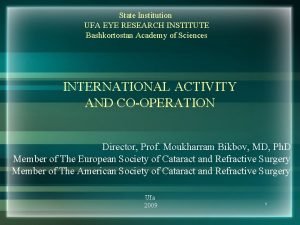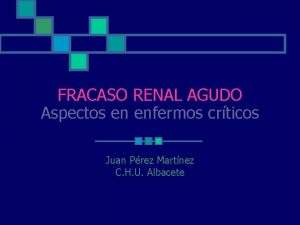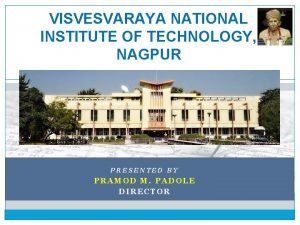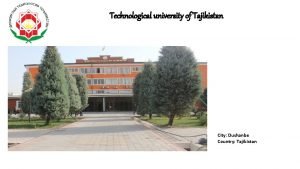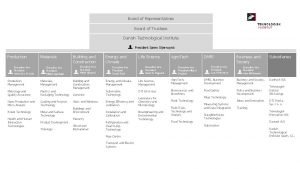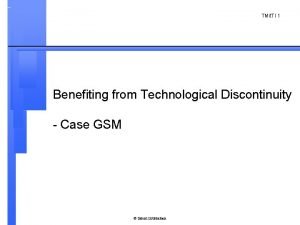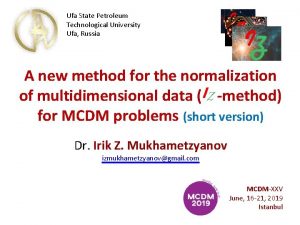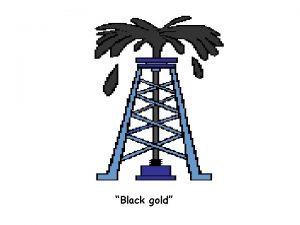Ufa State Petroleum Technological University Konesev S G






- Slides: 6

Ufa State Petroleum Technological University Konesev S. G. Khazieva R. T. Kirillov R. V. The Research of Stabilization Properties of Inductive-Capacitive Converters based on the Two-sections Hybrid Electromagnetic Elements Ufa 2016

2 Actual research Inductive-capacitive converters (ICC) for the current stabilization systems (CSS) based on discrete electromagnetic elements (EME) Figure 2 – Scheme of ICC Figure 3 – T-scheme of three-phase ICC with connections between the phase Figure 1 – Scheme of the capacitive storage charge Figure 6 – Scheme of ICC, loaded resistors Figure 4 – Scheme of bridge converter Figure 5 – Scheme of secondary power source with ICC

3 Actual research Construction of hybrid electromagnetic elements (EME) Figure 7 – A general view of a parametric transformer (paratrans) Figure 11 – General view of the okon Figure 8 – General view of upotrans Figure 9 – A general Figure 10 – General view of indukon of the dekon Figure 12 – General view of the generator Fitch-Govel Figure 13 – General view of a spiral strip line (SSL) Figure 14 - General view of the multifunction integrated electromagnetic component (MIEC) unified design and technology of the component (UDTC) Figure 15 – Inductivecapacitive converter (Patent number 2, 407, 136 from 27. 04. 2010) Figure 16 – Three-phase inductive-capacitive converter (Patent number 2, 412, 521 from 20. 02. 2011)

4 Mathematical modeling of two-section MIEC and evaluation of the stabilization properties of ICC based on them in different methods of connection MIEC sections Figure 17 - Schemes of MIEC, the system of equations describing the processes in MIEC, and formula of load current Uin= Uel 1 + U 1, U 1 = (Iin–I 1)/( j∙ω∙C 1), U 2 = (I 1 –IL)/( j∙ω∙C 2), Uel 1 = j∙ω∙L 1∙(Iin+IL), U 1 = Uel 1 + Uel 2 + UL, I 1 = IL , IL = ω∙C∙Uin/(2∙j), IL = Uin/(2∙j∙ω∙L). Criterion load current stabilization of the load resistance changes from Zн = 0 to Zнmax (stabilizing factor): δ = (IL)2∙ZL = 0/(In)2∙ZLmax ≤ 1

5 Mathematical modeling of two-section MIEC and evaluation of the stabilization properties of ICC based on them in different methods of connection MIEC sections Figure 18 – Frequency response of two-section MIECs

6 The main conclusions and results (conclusion) According to the research of the frequency responses of different schemes of two-section MIEC, we can make following conclusions: 1. The advantage of two-section structure of MIEC is the possibility of different methods of connection MIEC sections. 2. The authors developed and patented ICC based on MIEC. This ICC reduces the weight and dimensions of CSS, cutting down the number of components. It provides transformation of electric energy and change of the resonant frequency of the device. 3. The authors produced the mathematical model of ICC, which is based on MIEC with successively-connected sections and diagonal connection of the power supply and the load with the output in the middle of the secondary electrode. The developed mathematical model determines the width of the load range in which the stabilization is carried out. The model for the research of electromagnetic processes is built with the integral parameters of MIEC. They include full inductance of the electrical electrodes, the total capacity and the current of the electrical leads. 4. It is shown that in successive connection of sections of MIEC and diagonal connection of the power source and the load, this scheme is the most optimal for the following devices: ICC, CCSD. Application of MIEC in CCSD reduces weight and dimensions of the device. Two-sections MIEC with successively-connected sections and diagonal connection of the power supply and the load with the electrical lead in the middle of the secondary electrode is expedient to use in devices whose transfer functions should be close to unity, such as in ICC. 5. Schemes, which have high filtering properties, provide maximum stability of the load current when they are powered with non-sinusoidal voltage. The proper accounting of features, which is associated with the influence of non-sinusoidal voltage on the characteristics of MIEC, enables the development of converters with high technical and economic parameters.

